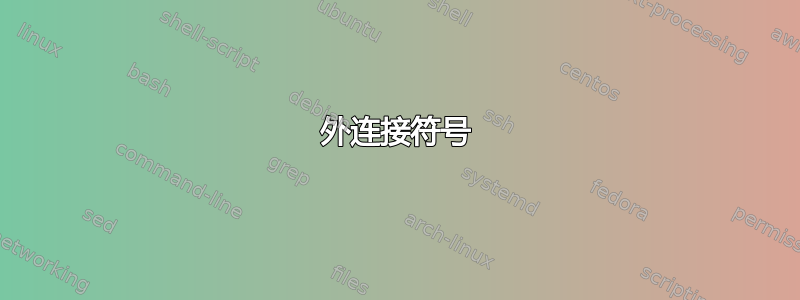
答案1
\documentclass[a4paper]{article}
\usepackage{amssymb}
\def\ojoin{\setbox0=\hbox{$\bowtie$}%
\rule[-.02ex]{.25em}{.4pt}\llap{\rule[\ht0]{.25em}{.4pt}}}
\def\leftouterjoin{\mathbin{\ojoin\mkern-5.8mu\bowtie}}
\def\rightouterjoin{\mathbin{\bowtie\mkern-5.8mu\ojoin}}
\def\fullouterjoin{\mathbin{\ojoin\mkern-5.8mu\bowtie\mkern-5.8mu\ojoin}}
\begin{document}
\[A\leftouterjoin B\]
\[A\rightouterjoin B\]
\[A\fullouterjoin B\]
\end{document}

答案2
和unicode-math和 XeLaTeX 或 LuaLaTeX,您可以直接使用这些符号:
% compile with xelatex or lualatex
\documentclass{article}
\usepackage{fontspec}
\usepackage{unicode-math}
\setmathfont{XITS Math}
\begin{document}
$A ⟖ B$
\end{document}

它们还有别名:\leftouterjoin,,\rightouterjoin\fullouterjoin
答案3
另一个解决方案是这网页。
\documentclass{article}
\usepackage[T1]{fontenc}
\usepackage[utf8]{inputenc}
\usepackage{amssymb}
\usepackage{ifsym}
\begin{document}
$A {\tiny \textifsym{d|><|d}} B$
\end{document}
答案4
更好的版本,它使用\Join看起来像真实 DB 连接符号的符号\bowtie!
\def\ojoin{\setbox0=\hbox{$\Join$}%
\rule[0.1ex]{.27em}{.4pt}\llap{\rule[1.3ex]{.27em}{.4pt}}}
\def\leftouterjoin{\mathbin{\ojoin\mkern-5.8mu\Join}}
\def\rightouterjoin{\mathbin{\Join\mkern-5.8mu\ojoin}}
\def\fullouterjoin{\mathbin{\ojoin\mkern-5.8mu\Join\mkern-5.8mu\ojoin}}


